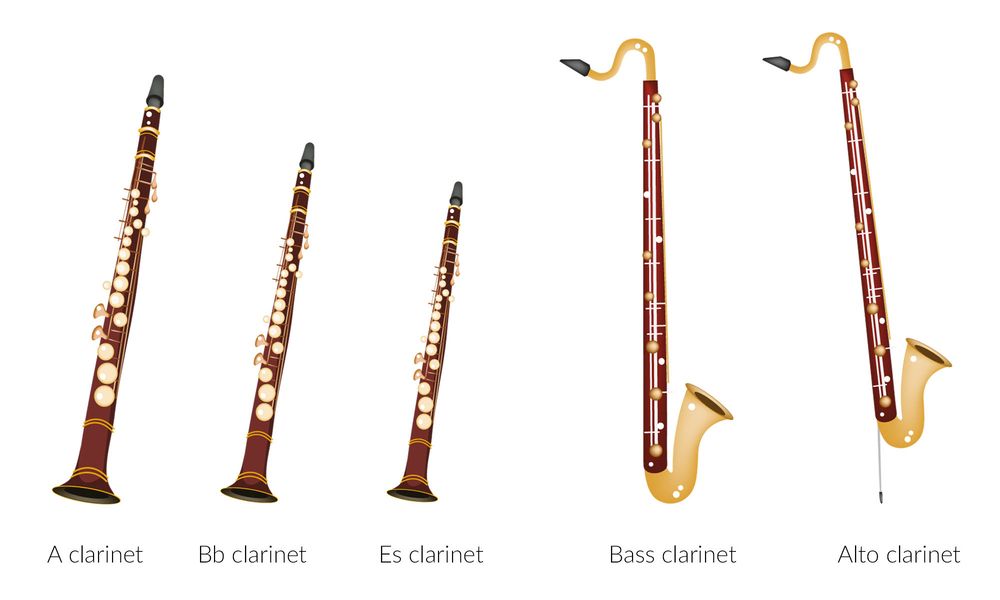4. Instrument Families
In the instrument family of the clarinet, it's much like the composer family of Bach. It's large, but not all members are equally well-known or popular. Arranged by pitch, the family can be introduced in the following order: piccolo clarinet, clarinet, alto clarinet, bass clarinet, contrabass clarinet, the rather rare subcontrabass clarinet, and somewhat outside the norm, the basset horn, an alto clarinet that used to be built in a curved shape with a box but today resembles the bass clarinet. Now, let's shine the spotlight on each family member.

The piccolo clarinet comes in three pitches: D, Eb, and F. The most well-known and preferred pitch, especially in orchestras, is Eb. Many simply call this model Eb clarinet instead of piccolo clarinet in Eb. Unlike its big sister, the Bb clarinet, it's typically used individually even in symphonic wind orchestras due to its very penetrating sound.
The already mentioned Bb clarinet is often referred to as "normal" clarinet and is what people usually mean when they say, "I play the clarinet." This soprano clarinet also comes in the pitches A and C. Most professional musicians have both a Bb and an A clarinet. The advantage of having both lies in their nearly identical size and the ability to switch between them for different keys. The advantage of the C clarinet lies in its pitch; it sounds as it is notated. Therefore, the musician can spontaneously pick up the instrument and play the same pitch as the pianist without having to transpose.
Once we move tonally out of the "soprano range," we are also moving away from the most common clarinet models. Even though the other family members also appear in orchestras, they are relatively rare: the alto clarinet in F or Eb with straight or upward-curved bell, the Bb bass clarinet, and the B contrabass clarinet.
Especially the parts for bass and contrabass clarinet are often played individually, or if they are not available, by other instruments, such as the lower saxophone register. Thus, the presence of both is not strictly necessary.
As unassuming as a clarinet may look in its black attire, it stands out above all other wind instruments when it comes to the range of tones. The lowest note on the Bb clarinet is E, and special clarinet models can go even lower, reaching almost four octaves upwards to high C. In comparison, saxophones or flutes have three octaves, not considering possible special fingerings for harmonics.
Clarinet is counted among transposing instruments, but what does that mean exactly? Put simply: when the clarinet plays a C, the pianist must play a B to produce unison. The bass clarinet sounds in low B, which means it sounds a ninth lower than notated. If a deeper octave is needed in terms of sound, the contrabass clarinet comes into play, and in the final step, the subcontrabass clarinet. A sound comparison between the contrabass clarinet and the "normal" clarinet would show that these two only approximate each other, with one playing very high and the other very low.






